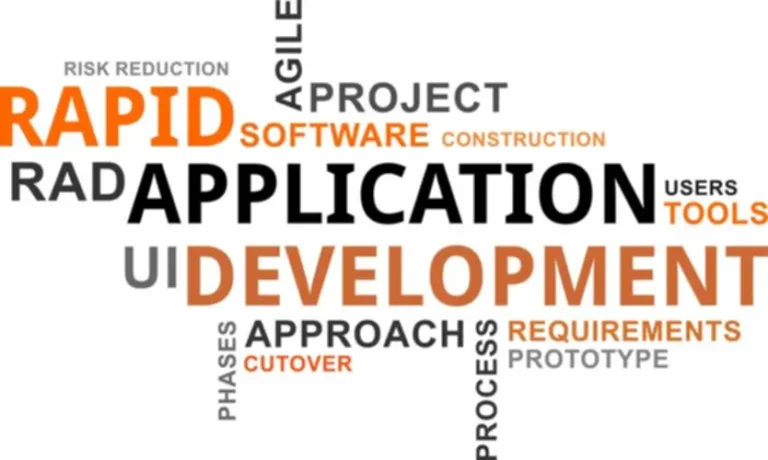When applied correctly, ALM streamlines the method of application and software growth whereas making sure that each one stakeholders have enter. Unify necessities, threat, and test management with Agile engineering capabilities to speed up delivery of high-quality software. By doing ALM with the best instruments, you’ll be able to successfully plan your release and get the absolute best product to market on time.

At a glance, Application Lifecycle Management (ALM) and the Software Development Life Cycle (SDLC) appear interchangeable. However, they serve completely different scopes within software creation and administration. Learn about Application Lifecycle Management (ALM), its pivotal phases, benefits & the distinction from SDLC. Delve into the trendy function of Application Lifecycle Management and future tendencies. Retirement of an application or service must also be thought of as a part of maintenance.
Deployment And Launch Management
Deployment might seem simple, but it carries its own set of challenges. Careful orchestration is crucial when deploying to a cloud platform, integrating with current enterprise systems, or rolling out to utility shops. A phased rollout is usually employed, allowing for real-world feedback earlier than a broader release. When approaching software development with ALM, you have to contemplate the entire lifespan of the application. Maintenance and future updates must be taken into consideration, including when the application ought to be retired and replaced.
Streamlined Collaboration
- Implementing a successful software lifecycle management technique requires an understanding of the levels of ALM and the creation of a clear strategy and plan for growth, deployment and beyond.
- ALM is a process of specification, design, growth, and testing of a software software.
- It ensures that functions are developed effectively, meet quality standards, and align with enterprise aims.
- Hence, communication between groups becomes more environment friendly as a result of each group is conscious of what to do to move the project forward.
ALM provides a unified platform for all stakeholders, from builders https://www.globalcloudteam.com/ and testers to managers and end-users. With integrated instruments and collaborative frameworks, groups can talk extra effectively, guaranteeing everybody stays on the identical page and any potential bottlenecks or miscommunications are promptly addressed. It entails performing on consumer suggestions, addressing unexpected issues, implementing updates, and ensuring compatibility with evolving technologies.
ALM instruments present larger visibility into the application lifecycle, which helps break down silos and permit for extra environment friendly application production. The necessities administration, design, improvement, testing and quality assurance (QA), deployment, and upkeep phases make up the ALM process. ALM tools supply a platform that helps each development and testing phases of your software.

ALM can enhance software program quality, cut back growth cycles and costs, and enhance stakeholder engagement and communication. Each stage contains a separate set of duties, assets, and people to ensure the software program is developed, examined, and deployed in a systematic what is a alm and controlled manner. ALM permits rapid software development, permitting companies to remain aggressive. By leveraging ALM, groups can select instruments they like, thus boosting employee satisfaction and productiveness.
Some folks confuse software lifecycle administration (ALM) with the software program development life cycle (SDLC). While they could appear comparable, the important difference is that ALM consists of every stage of an application’s lifetime. SDLC contains only the development facet of an utility, so SDLC is just one a part of ALM. Simply put, ALM is the process of making and maintaining an application until it’s not used.

The built-in system created by ALM is extra environment friendly than a group of unconnected instruments and processes unfold across numerous teams. This integration also benefits organizations by improving communication and collaboration and aligning software program objectives with any enterprise worth or corporate aim. ALM continues after growth until the applying is now not used, and will span many SDLCs. ALM options offer end-to-end instruments for the creation and management of applications.
These tools, typically deployed as SaaS (software as a service) or cloud-based solutions, assist manage the elevated number of purposes that enterprises depend on. Governance instruments offer project managers solutions for maintaining communication and feedback loops across teams. When a software growth team follows ALM principles, builders and testers collaborate effectively to improve software program quality. They can use automation to test supply code incessantly and troubleshoot coding errors early.
This is complemented by the work of the testing staff which runs their verifications of all of the features developed, in addition to full integration testing of the entire system, as soon as growth is completed. Application Lifecycle Management (ALM) stands as a important component of contemporary software improvement, offering an built-in strategy encompassing each part, from inception to retirement. As we have explored, an ALM strategy goes past simply software creation — it ensures high quality, efficiency, and alignment with overarching business goals. The fusion of AI, a shift in direction of cloud-based options, and an unwavering concentrate on security spotlight the evolution of ALM to fulfill tomorrow’s challenges.
You may discover all the features you want in 1 software, or you might must combine with extra tools—developer-specific tools, for example. The ALM software you select also needs to help your development course of, whether or not it’s agile, waterfall, DevOps, or something else. The improvement and testing levels conclude when the product reaches high quality and stability ok for release. As defined within the next part, the ALM process makes positive that every one elements for all levels of application lifecycle management are explicitly established and managed. Maintenance or consumer experience is traditionally the longest stage of ALM.
The Agile methodology has effectively changed the extra conventional Waterfall methodology, and has updated all levels of ALM, from requirements administration and planning to maintenance. Application lifecycle management can be divided into totally different phases, or it can be a relentless process, depending in your growth process (e.g., waterfall, agile, or DevOps). As quickly as teams construct a full version of the applying, it must endure a collection of exams to ensure it behaves as deliberate. This is a crucial step to uncover any bugs that can cause the appliance to interrupt. We normally take a look at by imitating all possible AI in Telecom person interactions within the utility and observing the application’s habits.
For a successful product launch, groups should deal with every step of the method with equal significance. Because organizations are increasingly reliant on applications to achieve enterprise aims, it is necessary to have instruments and applied sciences that can help ship apps that meet users’ needs. Application Lifecycle Management (ALM) is a vital side of software program growth and project administration, encompassing the whole lifecycle of an application from inception to retirement. These comparisons spotlight the unique options, advantages, and functions of each, offering useful insights for professionals looking to optimize their processes and practices. Application lifecycle management (ALM) is the product lifecycle management (governance, growth, and maintenance) of computer packages.
